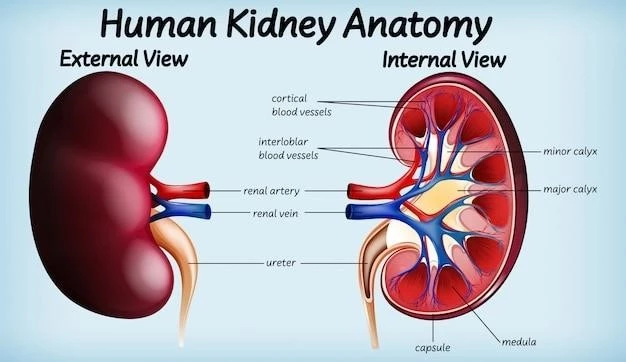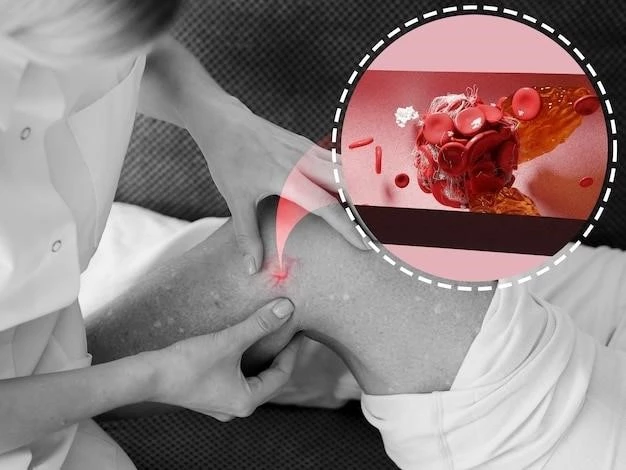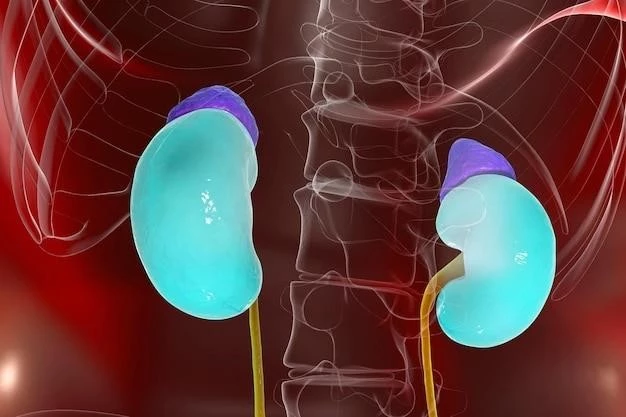Introduction to Renal Artery Stenosis
Renal artery stenosis, also known as kidney stenosis, is a blockage of the kidney artery, which may ultimately lead to kidney failure and hypertension (high blood pressure).
Definition and Overview
Renal artery stenosis, also referred to as kidney stenosis, is a condition characterized by the narrowing of one or both renal arteries, often due to atherosclerosis or fibromuscular dysplasia. This narrowing can lead to decreased blood flow to the kidneys, potentially resulting in hypertension (high blood pressure) and kidney dysfunction.
Causes of Renal Artery Stenosis
In most cases, renal artery stenosis is caused by atherosclerosis, the build-up of cholesterol deposits (plaque) in the arteries.
Atherosclerosis
Atherosclerosis, characterized by the build-up of cholesterol deposits in the arteries, is a common cause of renal artery stenosis. The narrowing of the renal arteries due to atherosclerosis can lead to decreased blood flow to the kidneys, resulting in hypertension and potential kidney damage.
Fibromuscular Dysplasia
Fibromuscular dysplasia is another less common cause of renal artery stenosis, characterized by abnormal cellular growth in the arterial walls. This condition can lead to the narrowing of the renal arteries, affecting blood flow to the kidneys and potentially resulting in hypertension and kidney dysfunction.

Symptoms of Renal Artery Stenosis
Renal artery stenosis may present with various symptoms, including high blood pressure and potential kidney failure.
Hypertension (High Blood Pressure)
Hypertension, or high blood pressure, is a common symptom of renal artery stenosis. The narrowing of the renal arteries can lead to increased blood pressure as the body attempts to compensate for reduced blood flow to the kidneys.
Kidney Failure
Renal artery stenosis can lead to kidney failure, a serious condition where the kidneys lose their ability to function properly. This can result in the accumulation of waste and fluid in the body, leading to various complications and the need for treatments such as dialysis or kidney transplant.
Complications Associated with Renal Artery Stenosis
Renal artery stenosis can lead to complications such as the acceleration of hypertension and worsening renal function.
Acceleration of Hypertension
One of the complications associated with renal artery stenosis is the acceleration of hypertension. The narrowing of the renal arteries can contribute to an increase in blood pressure, potentially leading to further hypertension-related issues if left untreated.
Worsening Renal Function
Another complication associated with renal artery stenosis is the potential for worsening renal function. The reduced blood flow caused by the narrowing of the renal arteries can lead to kidney damage and impaired kidney function over time.
Diagnosis of Renal Artery Stenosis
Diagnostic methods for renal artery stenosis include Doppler ultrasound and Magnetic Resonance Angiography (MRA) to assess blood flow and detect arterial narrowing.
Doppler Ultrasound
Doppler ultrasound is a non-invasive imaging test used to examine the blood flow in the renal arteries. By utilizing sound waves, this diagnostic method can help identify any narrowing or blockages in the arteries that may be indicative of renal artery stenosis.
Magnetic Resonance Angiography (MRA)
Magnetic Resonance Angiography (MRA) is a non-invasive imaging technique used to visualize the blood vessels, including the renal arteries. This procedure can help detect any abnormalities, such as stenosis or blockages in the renal arteries, aiding in the diagnosis of renal artery stenosis.
Treatment Options for Renal Artery Stenosis
Treatment for renal artery stenosis may include lifestyle changes, medication, and procedures to restore proper blood flow to the kidneys.
Lifestyle Changes
Implementing lifestyle changes, such as maintaining a healthy diet, regular exercise, reducing sodium intake, and quitting smoking, can help manage renal artery stenosis and improve overall cardiovascular health.
Medication
Medication options for renal artery stenosis may include angiotensin-converting enzyme (ACE) inhibitors or angiotensin II receptor blockers to help manage blood pressure and improve blood vessel function. These medications aim to alleviate symptoms and slow down the progression of the condition.
Procedures to Restore Blood Flow
Procedures to restore blood flow in cases of renal artery stenosis may include percutaneous angioplasty and stenting to widen the narrowed arteries and improve blood circulation to the kidneys. These interventions aim to alleviate symptoms and prevent further complications associated with the condition.
Renal Artery Stenosis in Transplant Patients
Renal artery stenosis in transplant patients, known as TRAS, is a recognized complication post-transplantation that can occur within a few months to years. TRAS may present challenges and require specific management strategies.
Transplant Renal Artery Stenosis (TRAS)
Transplant Renal Artery Stenosis (TRAS) is a specific complication that can occur post-transplantation, usually within a few months to years. Management of TRAS in transplant patients may require specialized treatment approaches to address the narrowed arteries and restore optimal blood flow to the transplanted kidney.
Renal Artery Stenosis and Hypertension
Renal artery stenosis can contribute to hypertension, impacting kidney function and overall cardiovascular health.
Mechanism of Hypertension in Renal Artery Stenosis
The mechanism of hypertension in renal artery stenosis often involves the body misinterpreting reduced blood flow to the kidneys as low blood pressure, leading to a compensatory increase in systemic blood pressure. This response can trigger hypertension, impacting overall cardiovascular health.
Ongoing research focuses on advancements such as percutaneous angioplasty and stenting to improve outcomes in renal artery stenosis cases.
Renal Artery Stenosis Research and Developments
Ongoing research focuses on advancements such as percutaneous angioplasty and stenting to improve outcomes in renal artery stenosis cases.

Renal Artery Stenosis Case Studies
Renal artery stenosis case studies provide insights into the diagnosis, treatment, and outcomes of individuals with this condition.
Unusual Causes and Presentations
Renal artery stenosis case studies may explore unique causes and presentations of the condition, providing valuable insights into atypical scenarios and potential diagnostic and treatment challenges.
Conclusion
In conclusion, renal artery stenosis is a condition that can lead to serious complications such as hypertension and kidney failure. With the advancement in diagnostic methods and treatment options, including lifestyle changes, medication, and procedures like percutaneous angioplasty, there is hope for better management of this condition. Ongoing research and developments in the field aim to further enhance the understanding and treatment outcomes for individuals with renal artery stenosis.
